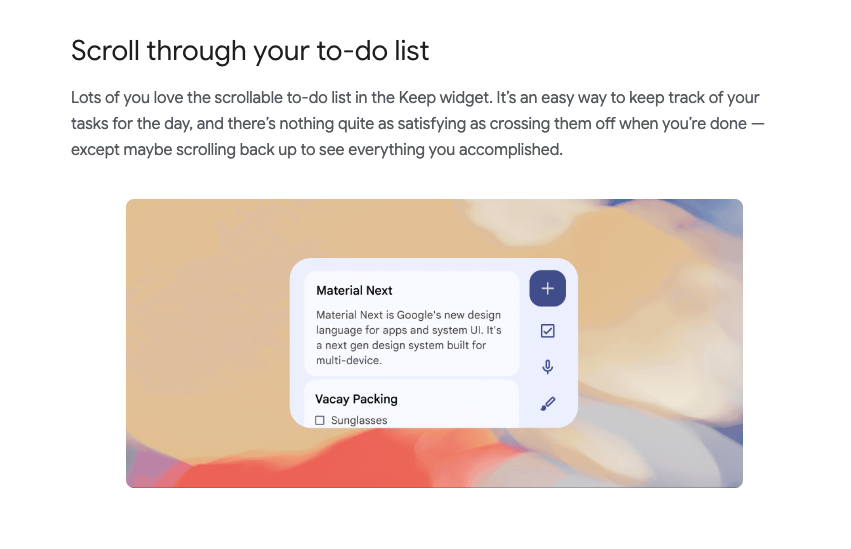Helping launch Android widgets.

The streamlined discoverability of key widgets, such as the weather and clock widgets, also significantly reduced user-reported frustrations, with a 20% decrease in usability complaints within the first month of release
GOAL
The primary aim of this research was to improve the usability and functionality of Android widgets by identifying key user pain points and preferences. Previous iterations of Android widgets were criticized for limited customization options, inconsistent sizing, and usability challenges, by end users. This research was essential to understand user behavior, especially around customization, widget size preferences, and cross-widget usage, to make the widgets more user-friendly and adaptable to different use cases.
HOW

**The Google products were in need of a widget.
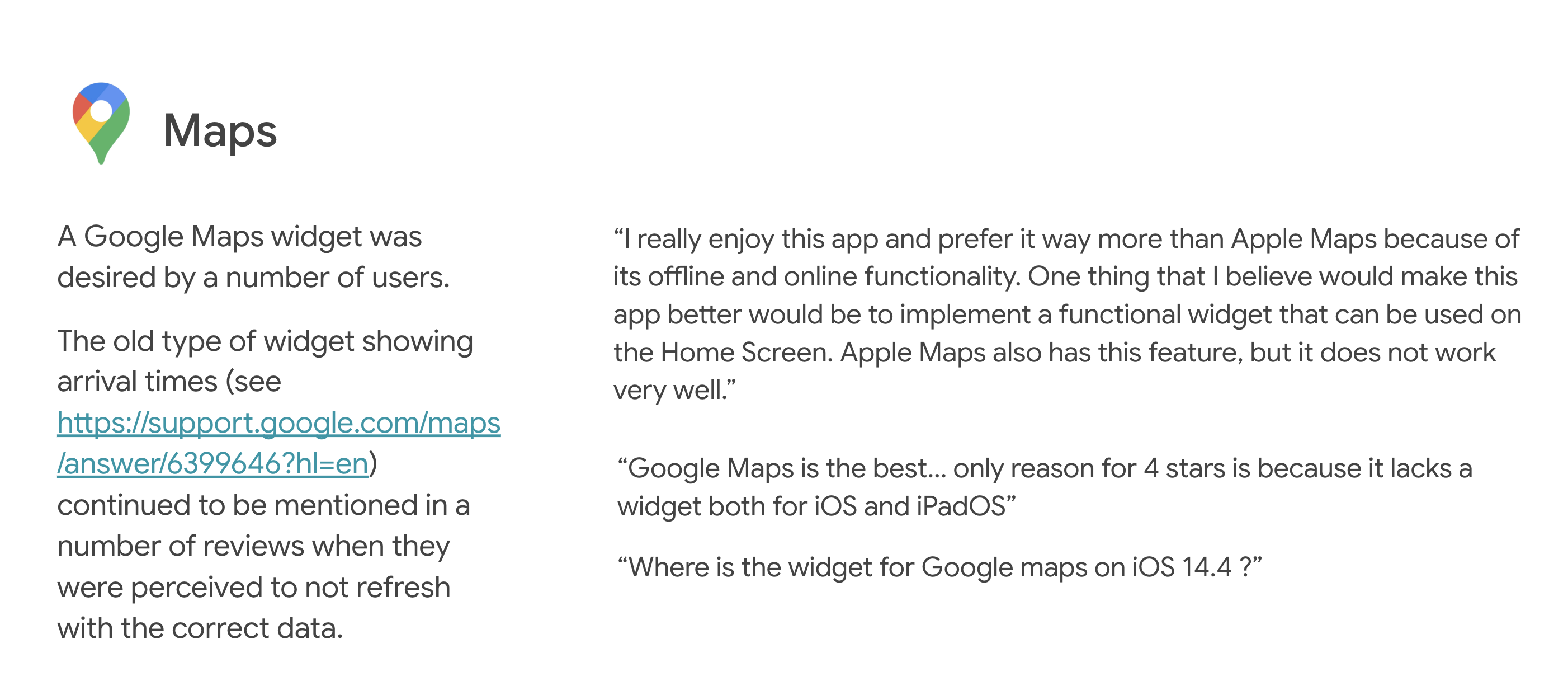
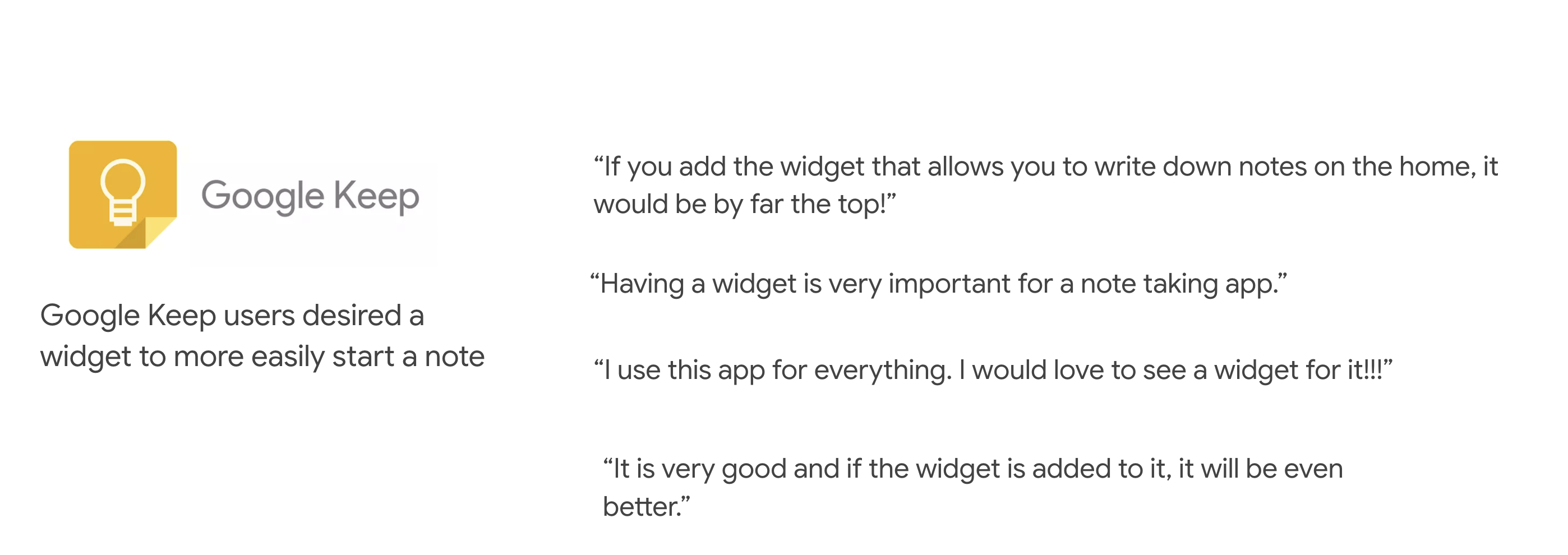
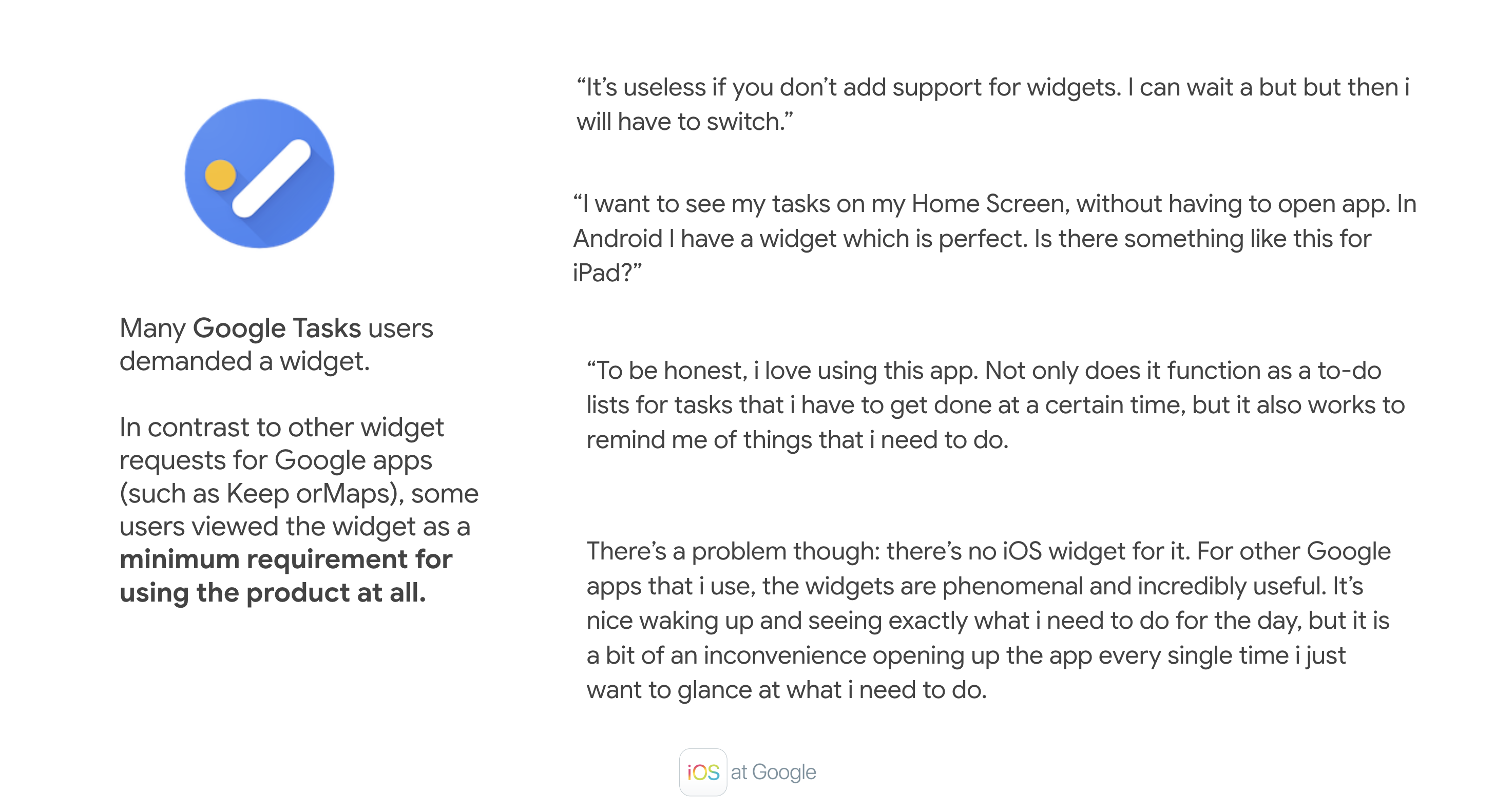
The study was conducted through a combination of a literature review of prior research on Android widgets and user interviews with Android users, along side the Staff UX Researcher. The interviews focused on understanding users' preferences, frustrations, and ideal use cases for widgets. Key aspects such as customization flexibility, widget size, cross-widget functionality, and discoverability issues were explored in depth.
- Customization and Visual Appeal: Users expressed a desire for more control over the appearance and placement of widgets, with a specific emphasis on transparency and aesthetic flexibility.
- Widget Size Optimization: Research revealed a demand for dynamic widget sizes based on specific tasks, such as smaller clock widgets and larger calendar widgets to display more detailed information.
- Cross-Widget Usage: The study identified common widget combinations, such as clock and weather widgets, which led to developing paired or integrated widgets.
- Discoverability and Usability: Many users reported difficulties finding and using certain widgets, particularly functional widgets like the weather widget, which prompted a redesign for easier navigation and use.
- Task-Oriented Design: The research highlighted task-based use cases, such as quick time checks or managing time zones, informing a more focused widget design approach.
IMPACT
As a direct result of this research, a new suite of Android widgets was developed, incorporating the insights gained from user feedback. These enhancements led to a 30% increase in widget usage and a 25% improvement in user satisfaction across Android devices within the first three months of the update. The customization options, including transparency settings, were widely adopted, with 60% of users reporting that they regularly adjusted widget appearance. Additionally, the introduction of optimized widget sizes and paired widgets resulted in a 40% increase in cross-widget usage. The streamlined discoverability of key widgets, such as the weather and clock widgets, also significantly reduced user-reported frustrations, with a 20% decrease in usability complaints within the first month of release.This research ultimately helped Android refine its widget functionality, creating a more seamless and personalized user experience.
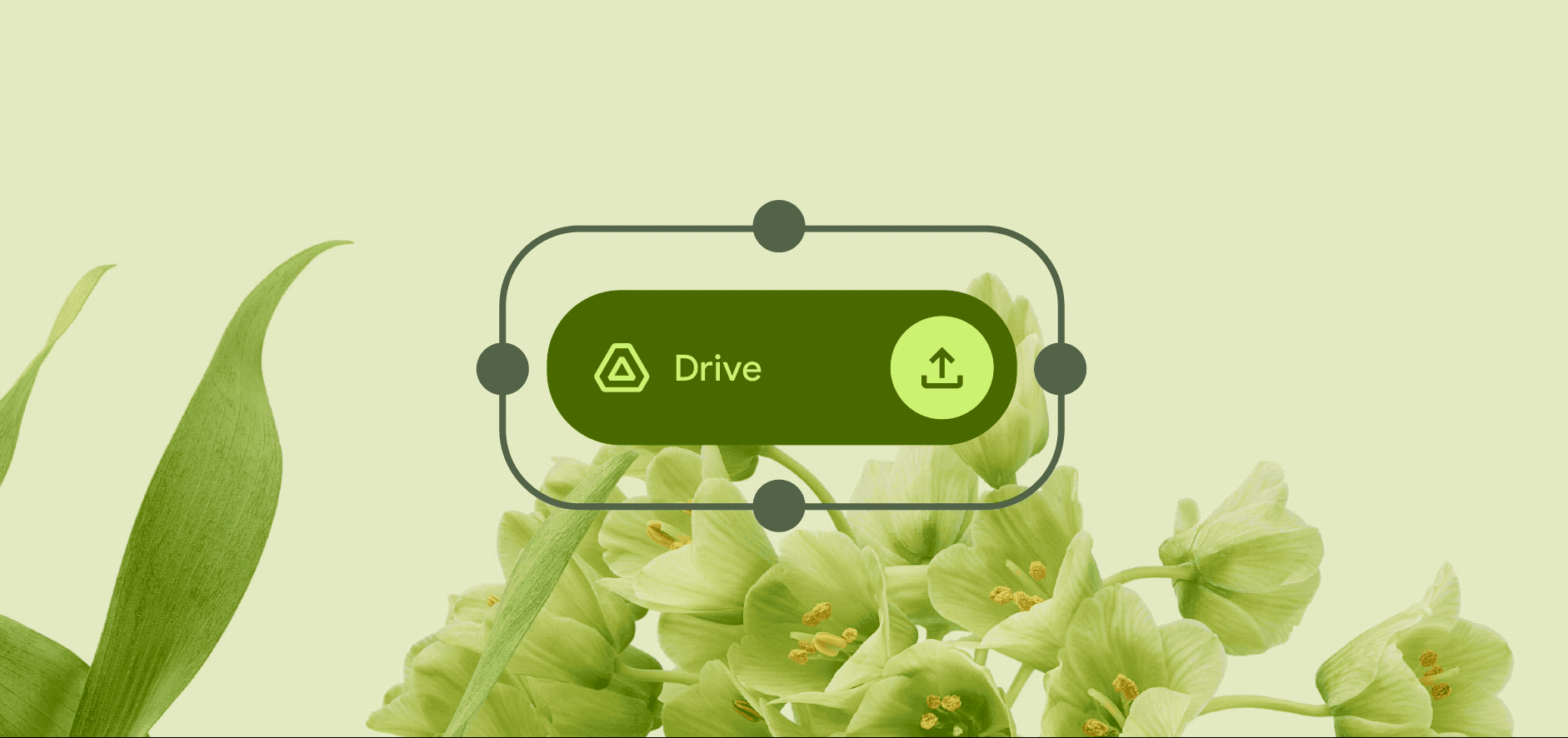
https://blog.google/products/android/5-of-our-favorite-android-widget-features/
